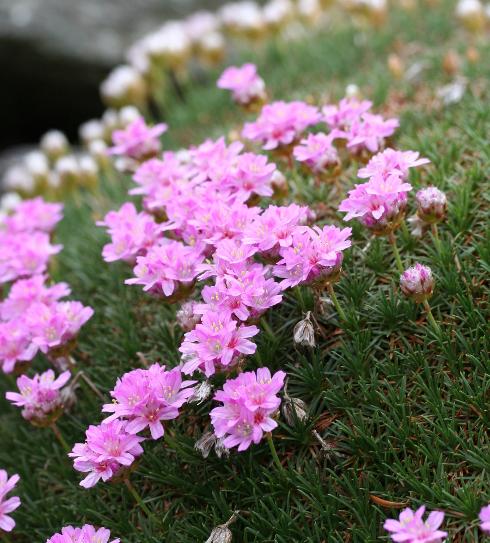Armeria juniperifolia
Drought hardy Spanish thrift forms a rounded cushion of foliage studded with clusters of pink or white flowers
Denise Bush
Viernes, 24 de agosto 2018, 15:44
Spanish thrift (binominal name Armeria juniperfolia or previously A. caespitosas), is a hardy little plant found growing in mountainous regions of central Spain.
Armeria is a genus with approximately 35 species distributed across Europe, Asia and America. It is a member of the Plumbaginaceae or leadwort family. The genus grows in varied habitats, from coastal dunes to mountainous regions.
Spanish thrift forms a rounded cushion of dark-green needle-like leaves between five and ten centimetres high by about fifteen centimetres wide.
The flowers, which can appear all year round in temperate regions, start off as bright red buds nestled in the foliage and open into masses of tiny pink flowers on short stems.
As the plant is so low growing it can easily get swamped by others around it so is best planted as an edging, in a rockery, on walls or in containers.
Once established, Spanish thrift is drought resistant although occasional watering will keep it healthier and flowering for longer. It is also resistant to sea breezes, direct sun and frost. It is not fussy about soil and will adapt to even poor soils as long as it has good drainage.
There are many cultivars of Armeria juniperfolia including white forms such as A. juniperfolia 'Alba'.
The genus name comes from the old French 'armerie' later 'armoire' which was the name for the cluster-headed dianthus. The specific epithet 'juniperfolia', is because the leaves are similar to juniper and the synonym for this plant 'caespitosa' comes from the Latin meaning 'covered with vegetation' (the Spanish word 'cesped' meaning 'lawn' is also derived from this word).
Propagation is best carried out by taking cuttings or dividing the plant in spring. Spanish thrift can also be grown from seed but may take months to germinate and is notoriously slow growing.
